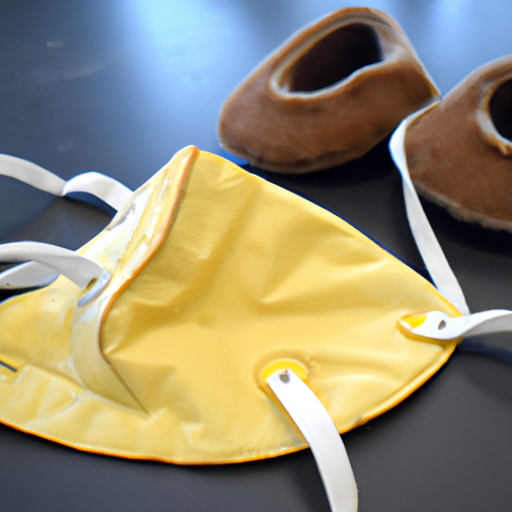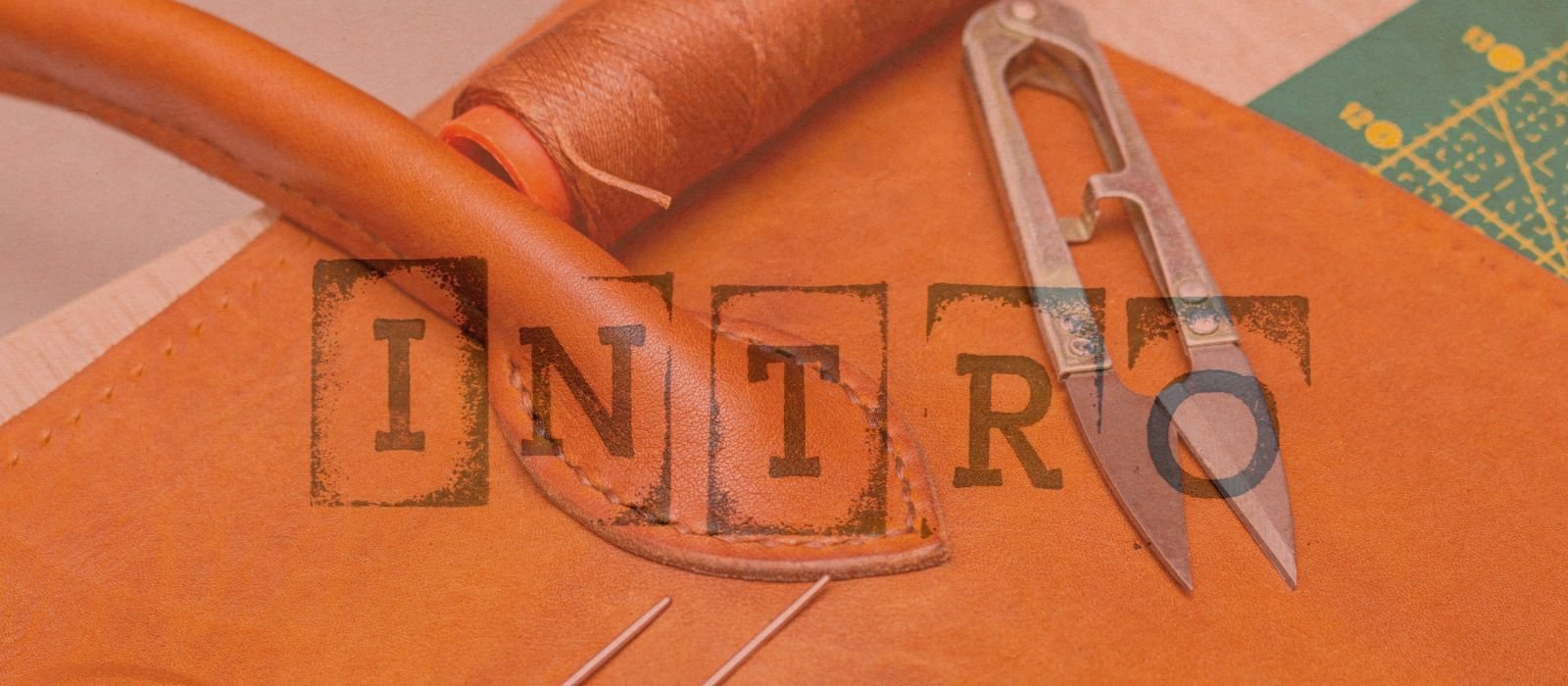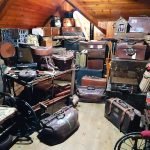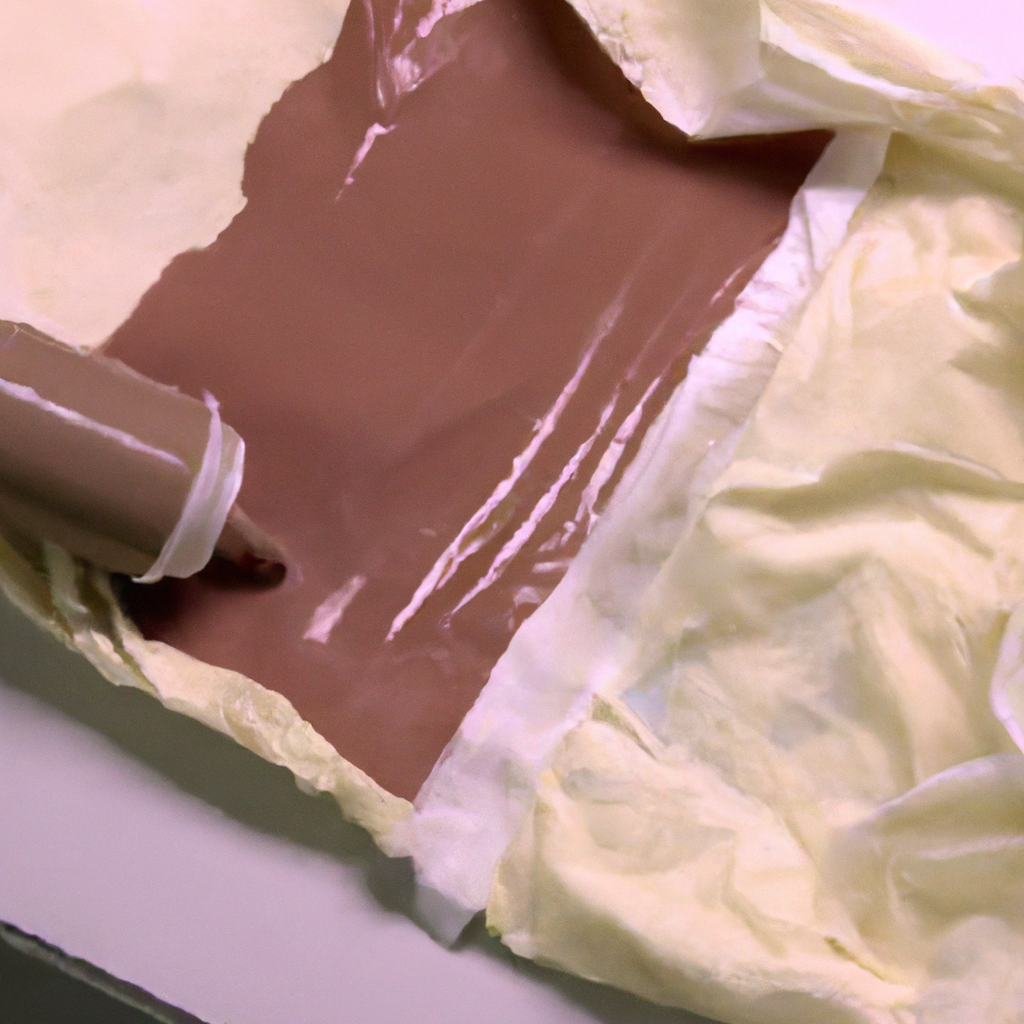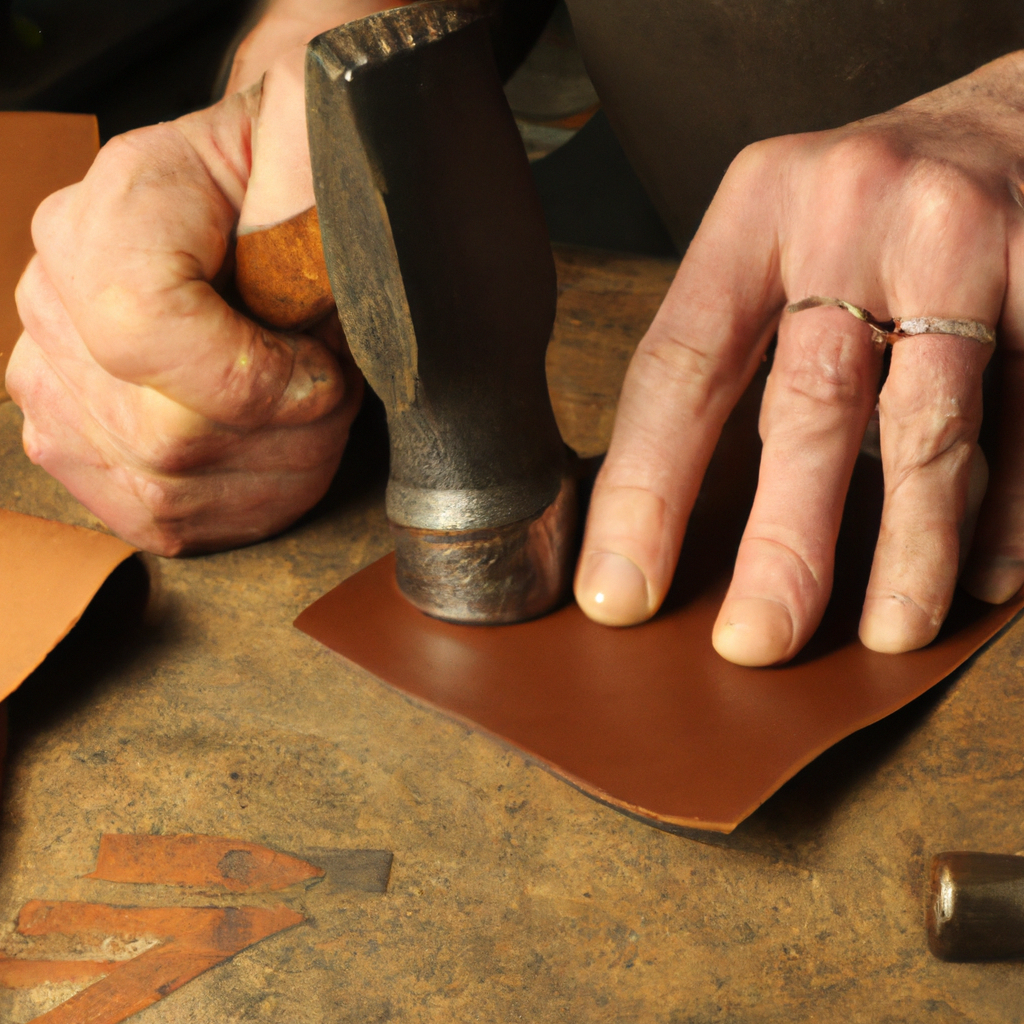What precautions should I take when working with leather?
Leather crafting is a fantastic hobby that allows you to create beautiful and functional items such as wallets, bags, and belts. However, ensuring your safety during the process is of utmost importance. From sharp tools and chemicals to ergonomic issues, there are several safety precautions you should be aware of and implement. By understanding and following these measures, you can fully enjoy the art of leather crafting while keeping yourself protected.1. Personal Protective Equipment (PPE)
Leather crafting can be a rewarding and enjoyable hobby, but it is important to prioritize your safety while working with leather. Personal Protective Equipment (PPE) plays a vital role in ensuring you stay protected from potential hazards. Let’s explore the various types of PPE that you should consider using during your leather crafting endeavors.1.1 Gloves
When working with leather, it is crucial to wear gloves to protect your hands. Leather crafting involves the use of sharp tools and materials that could potentially cause cuts, scratches, or burns. Additionally, gloves can provide a barrier against various chemicals that may be present in dyes or adhesives. When choosing gloves for leather crafting, opt for those made of materials like leather or thick, durable synthetic materials. These gloves should fit well and allow for dexterity, enabling you to handle tools and materials effectively while also protecting your hands.1.2 Eye Protection
Eye protection is another essential aspect of leather crafting safety. When cutting, shaping, or dyeing leather, small particles may become airborne, posing a risk to your eyes. Wearing safety goggles or glasses with side shields can prevent these particles from entering your eyes and causing injury. Ensure that your eye protection meets industry safety standards and provides adequate coverage. Prioritizing your eye safety will ensure that you can work on your leather projects without any worries.1.3 Respiratory Protection
Depending on the techniques you employ in leather crafting, respiratory protection may also be necessary. Certain processes, like sanding or using chemicals, can release particles or fumes that could be harmful to inhale. The use of respiratory protection, such as a dust mask or respirator, can help filter out these particles and protect your respiratory system. Select the appropriate type of respiratory protection based on the specific tasks you will be performing. Be sure to read and follow the manufacturer’s instructions for proper usage and maintenance.1.4 Clothing
Protective clothing is crucial when working with leather as it shields your body from potential hazards. Depending on the nature of your project, consider wearing long sleeves and pants made of durable materials to protect your skin from cuts, scrapes, or chemical splashes. Additionally, consider wearing an apron or a leather crafting smock to protect your clothing from dye spills or sharp tool accidents. By investing in proper protective clothing, you can create a safe and comfortable working environment for yourself.1.5 Footwear
Last but not least, ensure that you wear appropriate footwear while engaging in leather crafting. Closed-toe shoes or boots with sturdy soles can protect your feet from accidental tool drops, falling objects, or chemical spills. By wearing the right footwear, you can minimize the risk of foot injuries and work confidently on your leather projects.2. Proper Ventilation
Proper ventilation is a critical aspect of maintaining a safe working environment when leather crafting. Adequate airflow can help dissipate potentially harmful substances, such as fumes from adhesives or chemicals, reducing the concentration of these substances in the air. Let’s explore the importance of ventilation and the different options you can consider.2.1 Importance of Ventilation
Ventilation plays a crucial role in ensuring a safe working environment by improving the air quality in your workspace. When working with adhesives, dyes, or chemicals, harmful fumes or volatile organic compounds (VOCs) can be released into the air. Breathing in these substances could lead to various health issues, including respiratory problems or allergies. By having proper ventilation in your workspace, you can help remove these potentially hazardous substances, thus reducing the risk to your health. Adequate ventilation also helps regulate temperature and humidity, creating a comfortable and productive environment for your leather crafting activities.2.2 Ventilation Options
To ensure the safety of your breathing air and maintain proper ventilation, there are several options you can consider:- Natural Ventilation: If your workspace has windows or doors that can be opened, taking advantage of natural ventilation can help bring in fresh air and remove stale air. Opening windows and doors during or after working with chemicals or adhesives can facilitate the release of fumes.
- Ventilation Fans: Installing exhaust or ventilation fans can help circulate air within your workspace. These fans can effectively pull out the air contaminated by fumes and introduce fresh air, ensuring continuous airflow.
- Air Purifiers: Air purifiers with activated carbon filters can help remove airborne particles and odors. These devices are particularly useful if you work in a space with limited natural ventilation or have allergies or sensitivities to certain chemicals.
3. Use of Tools and Equipment
The safe use of tools and equipment is crucial to prevent accidents and injuries during your leather crafting projects. Whether you are working with hand tools or power tools, it is essential to handle and maintain them correctly. Let’s explore the importance of proper handling and maintenance, as well as safe practices for both hand and power tools.3.1 Proper Handling and Maintenance
Proper handling and maintenance of tools and equipment are key to preventing accidents and optimizing their performance. Here are some guidelines to keep in mind:- Read the Instructions: Familiarize yourself with the manufacturer’s instructions for each tool or piece of equipment you use. Understanding how to use and maintain them correctly will minimize the risk of accidents.
- Keep Tools in Good Condition: Regularly inspect your tools for any signs of wear, damage, or loose parts. Replace or repair any faulty tools to ensure they remain safe and effective to use.
- Store Tools Properly: After using your tools, store them in a designated area where they won’t be exposed to moisture or extreme temperatures. This helps prevent rusting or warping, which could affect their performance and safety.
3.2 Safe Use of Hand Tools
Hand tools are essential in leather crafting and can range from simple tools like knives and shears to more specialized tools like punches and awls. To ensure your safety while using hand tools, consider the following:- Use the Right Tool for the Job: Selecting the appropriate tool for each task can improve safety and efficiency. Avoid using tools for purposes they were not designed for, as this can lead to accidents or damage to the tool.
- Maintain Proper Grip and Control: Hold hand tools firmly and securely to maintain control while using them. Avoid using excessive force or applying uneven pressure, as this can increase the risk of slips or mishaps.
- Keep Fingers Clear: Always be aware of where your fingers are about the tool you are using. Avoid placing your fingers in the path of a blade or a moving part, as this could result in serious injuries.
3.3 Safe Use of Power Tools
Power tools, such as rotary cutters or sewing machines, can significantly enhance your leather crafting capabilities. However, they also require additional caution due to their mechanical or electrical nature. Here are some safety tips for using power tools:- Wear Personal Protective Equipment: Prioritize safety by wearing the necessary PPE, such as gloves, eye protection, and hearing protection when using power tools. These precautions will minimize the risk of injury from flying debris or excessive noise.
- Follow Manufacturer’s Instructions: Always adhere to the manufacturer’s instructions for each power tool. This includes understanding the tool’s features, limitations, and safety guidelines for operation and maintenance.
- Maintain a Clear Work Area: Keep your work area clean and free of any obstacles or clutter. Ensure there is ample space for you to operate the power tool safely and without distractions.
4. Fire Safety
Fire safety is a critical aspect of any workshop, including leatherworking. Being aware of potential fire hazards, taking preventive measures, and knowing how to extinguish fires can help protect yourself, your workspace, and your valuable materials. Let’s explore the importance of identifying fire hazards, fire prevention techniques, and fire extinguishing methods.4.1 Identifying Fire Hazards
Understanding the potential fire hazards in your leather crafting workspace is the first step toward creating a safe environment. Here are some common fire hazards to consider:- Flammable Materials: Leather, adhesives, dyes, and solvents are flammable substances commonly used in leather crafting. Accidental spills or improper storage can increase the risk of fire.
- Electrical Hazards: Overloaded circuits, damaged cords, or faulty electrical equipment can lead to electrical fires. Ensure that your electrical systems are in good condition and follow electrical safety practices.
- Heat Sources: Tools and equipment that generate heat, such as soldering irons or heat guns, can pose a fire hazard if not used or handled properly. Always monitor and control the heat sources to prevent accidents.
4.2 Fire Prevention
Taking preventive measures is key to minimizing the risk of fires in your leather crafting workspace. Consider the following preventive techniques:- Store Flammable Materials Properly: Keep flammable materials in designated storage areas that are away from potential ignition sources. Ensure they are properly sealed and not exposed to direct sunlight or extreme temperatures.
- Practice Electrical Safety: Regularly inspect electrical cords and equipment for any signs of damage. Avoid overloading electrical circuits and use surge protectors when necessary. Familiarize yourself with the location of electrical panels and fire extinguishers.
- Implement Safe Working Practices: Avoid smoking in your workspace, as embers or discarded cigarette butts can ignite flammable materials. Keep a clean and clutter-free workspace to minimize fire hazards.
4.3 Fire Extinguishing Methods
In case of a fire emergency, knowing how to properly extinguish a fire is vital. Familiarize yourself with the different types of fire extinguishers and their appropriate uses. The most common types of fire extinguishers are classified as A, B, C, D, or K, depending on the types of fires they can effectively suppress. Remember to follow the acronym PASS when using a fire extinguisher:- Pull the Pin: Pull the pin located on the extinguisher’s handle to break the tamper seal.
- Aim at the Base: Aim the nozzle or hose at the base of the fire where the fuel source is located.
- Squeeze the Handle: Squeeze the handle to release the extinguishing agent.
- Sweep Side to Side: Sweep the nozzle or hose from side to side to cover the area of the fire until it is extinguished.
5. Chemical Safety
When working with leather, it is common to use various chemicals for dyeing, finishing, or adhesive purposes. It is crucial to handle these chemicals safely to protect yourself, avoid accidents, and prevent potential health hazards. Let’s explore the identification and handling of chemicals, proper storage, and disposal, as well as the use of personal protective equipment.5.1 Identification and Handling of Chemicals
Before using any chemicals, it is essential to read and understand their Safety Data Sheets (SDS). SDS provides detailed information about the chemical composition, potential hazards, proper handling procedures, and emergency response measures. Familiarize yourself with the SDS of the chemicals you use in your leather crafting projects. When handling chemicals, follow these safety measures:- Use in a Well-Ventilated Area: Work in a properly ventilated area to minimize inhalation of potentially harmful vapors or fumes. If necessary, use additional respiratory protection, such as a mask or respirator.
- Wear Protective Clothing: Use appropriate PPE, including gloves, eye protection, and a lab coat or smock, when handling chemicals. This protects your skin and eyes from potential contact or splashes.
- Avoid Mixing Incompatible Chemicals: Some chemicals can react violently when combined. Read the SDS of each chemical and avoid mixing incompatible substances to prevent accidents or chemical reactions.
5.2 Proper Storage and Disposal
To maintain a safe working environment, it is important to store chemicals correctly and dispose of them properly when necessary. Consider the following guidelines:- Store in a Controlled Environment: Store chemicals in designated areas that are cool, dry, and away from direct sunlight or extreme temperatures. Ensure that storage areas are well-ventilated and separated from potential ignition sources.
- Label Containers Properly: Clearly label all chemical containers with the product name, hazards, and handling instructions. This helps prevent accidental misuse or confusion.
- Dispose of Chemicals Safely: Follow local regulations and guidelines for the disposal of chemicals. Improper disposal can harm the environment and pose risks to human health. Contact your local waste management facility for guidance on the proper disposal methods.
5.3 Use of Personal Protective Equipment
As mentioned earlier, personal protective equipment (PPE) plays a vital role in chemical safety. When working with chemicals, ensure that you wear the appropriate PPE to protect yourself from potential hazards. This may include the use of gloves, eye protection, respirators, and protective clothing. Before starting a project involving chemicals, evaluate the potential hazards involved and select the appropriate PPE accordingly. Ensure that your PPE fits properly and is in good condition to provide maximum protection. By handling chemicals safely, storing them correctly, and using the recommended personal protective equipment, you can mitigate risks and create a safer working environment for your leather crafting activities.6. Workstation Organization
Maintaining a well-organized workstation is crucial for both safety and efficiency during your leather crafting projects. By keeping your workspace clutter-free and having a designated place for tools and supplies, you can minimize the risk of accidents, find items easily, and create a productive environment. Let’s explore the importance of clearing clutter, proper tool placement, and organizing leather and supplies.6.1 Clearing Clutter
Clutter in your workspace can increase the risk of accidents and impede your ability to work efficiently. Take the time to clear clutter from your workbench, ensuring that it is free of unnecessary tools, materials, or debris. By doing so, you can create a safer and more organized working environment. Store unused tools or materials in designated containers or shelves, keeping them out of the way but easily accessible when needed. Regularly inspect your workspace and remove any hazards or unnecessary items to maintain a clean and clutter-free area.6.2 Proper Tool Placement
Organizing your tools properly not only improves safety but also saves time by allowing you to locate tools quickly when needed. Consider the following tips for proper tool placement:- Use Tool Racks or Pegboards: Install tool racks or pegboards on your workbench or workshop walls. These storage solutions allow you to hang or place tools within easy reach, keeping them organized and visible.
- Group Tools by Functionality: Categorize tools based on their functionality and usage. For example, keep cutting tools in one area, measuring tools in another, and so on. This helps you quickly locate the tools needed for a specific task.
- Utilize Tool Trays or Drawer Organizers: Invest in tool trays or drawer organizers to store small hand tools or accessories. These organizational solutions keep tools separated and prevent them from cluttering your workspace.
6.3 Organizing Leather and Supplies
Proper organization of leather and other supplies helps prevent damage, loss, or unnecessary wastage. Consider these tips for organizing leather and supplies:- Utilize Storage Containers: Store leather pieces in appropriate storage containers, such as bins or plastic sleeves, to protect them from dust, sunlight, or moisture. Label the containers to easily identify the type or color of leather contained within.
- Sort Supplies by Category: Organize your supplies, such as dyes, adhesives, or hardware, into separate containers or compartments. Grouping supplies by category helps you quickly find what you need and minimizes the risk of spills or confusion.
- Maintain an Inventory System: Keep track of your leather and supply inventory to prevent running out of essential materials or purchasing duplicates. Regularly update your inventory and replenish supplies as needed.
7. Ergonomics
Leather crafting often involves spending extended periods working on intricate and detailed tasks. Prioritizing ergonomics in your workspace can significantly improve your comfort, prevent physical strain, and reduce the risk of repetitive strain injuries. Let’s explore the importance of proper posture, using ergonomic tools, and taking regular breaks.7.1 Importance of Proper Posture
Maintaining proper posture while working is essential to prevent musculoskeletal issues and optimize your productivity. Here are some guidelines to follow:- Sit or Stand Straight: Whether sitting or standing, maintain an upright posture with your shoulders relaxed and your spine aligned. Avoid slouching or hunching over your work, as this can strain your neck, back, and shoulders.
- Position Your Work Correctly: Adjust the height of your work surface to a comfortable level, allowing you to maintain a natural posture and avoid unnecessary strain. Ensure that your work is positioned directly in front of you to avoid twisting or awkward movements.
- Support Your Wrists: When using tools or working with leather, support your wrists to prevent strain or discomfort. Consider using wrist rests or padding when necessary.
7.2 Using Ergonomic Tools
Ergonomic tools are specially designed to reduce strain on the body and enhance comfort during tasks. When selecting tools for your leather crafting endeavors, consider the following ergonomic features:- Soft-Grip Handles: Look for tools with soft or ergonomic handles that provide a comfortable grip, minimizing pressure on your hands and reducing the risk of developing hand fatigue or pain.
- Adjustable Options: Opt for tools with adjustable features, such as cutting depth or handle positions. These adjustable options allow you to tailor the tool to your comfort and specific requirements.
- Lightweight Materials: Choose tools made from lightweight materials whenever possible. Lighter tools are easier to handle and reduce the strain on your muscles and joints.
7.3 Taking Regular Breaks
Giving yourself regular breaks throughout your leather crafting sessions is crucial to prevent fatigue and maintain your mental and physical well-being. Incorporating short breaks into your work routine allows you to stretch, rest your eyes, and recharge. Consider these suggestions:- Move and Stretch: Take short breaks to stretch your muscles, especially those commonly used during leather crafting, such as your wrists, shoulders, and neck. Incorporate gentle exercises and stretches that can help alleviate tension and improve blood circulation.
- Rest Your Eyes: Focusing on detailed craftsmanship for extended periods can strain your eyes. Take regular breaks to rest your eyes by looking away from your work, blinking frequently, or even closing your eyes for a moment to relax them.
- Stay Hydrated and Nourished: Keep yourself well-hydrated by drinking water regularly, and nourish your body with nutritious snacks or meals. Proper hydration and nutrition contribute to your overall comfort and focus.
8. First Aid
Having a basic knowledge of first aid is essential, no matter your crafting discipline. Accidents can happen, and being prepared to provide immediate assistance can make a significant difference in the outcome. Let’s discuss the importance of first aid knowledge, having a first aid kit, and keeping emergency contact information readily available.8.1 Knowledge of First Aid
Taking the time to educate yourself about basic first-aid techniques is invaluable. Consider attending a first aid training course or workshop to learn essential skills, such as treating minor cuts, burns, or sprains. Understand the steps to follow in case of an emergency, including cardiopulmonary resuscitation (CPR) and how to administer first aid for different types of injuries. By being familiar with first aid procedures, you can confidently and efficiently respond to accidents, reducing the severity of injuries and potentially saving lives.8.2 Having a First Aid Kit
Every leather crafting workspace should have a well-stocked first aid kit easily accessible in case of injuries. Your first aid kit should include essential items such as:- Adhesive bandages in various sizes
- Sterile gauze pads and adhesive tape
- Antiseptic wipes or solution
- Scissors and tweezers
- Disposable gloves
- Pain relievers or analgesics
- Emergency blanket
8.3 Emergency Contact Information
When crafting alone or in a dedicated workspace, it is crucial to have emergency contact information easily accessible. Keep a list of emergency phone numbers, including local emergency services, poison control centers, and any relevant personal contacts, in a visible and easily accessible location. Additionally, inform a trusted friend or family member of your work hours and location, especially if you work alone or operate machinery or tools with a higher risk of injury. Taking these precautions ensures that you are prepared to respond promptly and effectively in case of an emergency during your leather crafting endeavors.9. Safe Storage of Materials
Properly storing your leather, chemicals, tools, and equipment is essential for maintaining their quality, prolonging their lifespan, and preventing accidents. Let’s explore the safe storage practices for leather, chemicals, as well as tools and equipment.9.1 Storing Leather
To keep your leather in optimal condition and prevent damage, consider the following storage practices:- Temperature and Humidity: Store leather in a cool, dry environment, avoiding exposure to extreme temperatures or high humidity. Excessive heat or moisture can lead to deterioration or mold growth.
- Avoid Direct Sunlight: Exposure to direct sunlight can cause fading or discoloration of the leather. Store leather away from windows or areas with intense sunlight.
- Proper Support: To prevent warping or creasing, store large leather pieces flat or roll them loosely. Use tissue paper or acid-free paper to separate layers and prevent sticking.
- Dust Protection: Cover leather items or place them in protective bags to prevent dust accumulation and protect them from potential scratches or abrasions.
9.2 Storing Chemicals
Proper storage of chemicals is crucial to prevent accidents or exposure to harmful substances. Consider the following guidelines:- Read the SDS: Follow the manufacturer’s instructions for storing each specific chemical. Some chemicals may require refrigeration, while others must be kept away from direct sunlight or heat sources.
- Separate Incompatible Chemicals: Store chemicals in a manner that separates incompatible substances to prevent accidental mixing or reactions. Check the SDS of each chemical for specific storage requirements and restrictions.
- Lockable Cabinets: Consider using lockable cabinets or storage containers to secure your chemicals. This prevents unauthorized access and reduces the risk of accidental spills or exposure.
- Ventilated Areas: If storing a significant quantity of chemicals or highly volatile substances, ensure that the storage area is well-ventilated to prevent the build-up of vapors.
9.3 Storing Tools and Equipment
Proper storage of tools and equipment not only prevents damage but also reduces the risk of accidental injuries. Here are some storage practices to consider:- Dedicated Areas: Designate specific areas or compartments for storing each type of tool or equipment. This makes it easier to locate items and reduces the risk of handling tools that are not intended for the task at hand.
- Organizational Solutions: Use toolboxes, wall-mounted racks, or drawer dividers to keep tools safely separated and organized. This prevents them from getting damaged or causing injuries due to improper storage.
- Secure Storage: If your tools or equipment are valuable or pose a safety risk when handled improperly, consider using lockable cabinets or containers to protect them from theft or accidental access.
How Can I Ensure Safety When Handling Leather to Avoid Common Mistakes?
When it comes to handling leather, being aware of common leather handling mistakes is crucial. Always wear gloves to protect your hands and be cautious when using sharp tools to avoid accidental injuries. Properly storing leather in a cool, dry place will prevent it from getting damaged.

